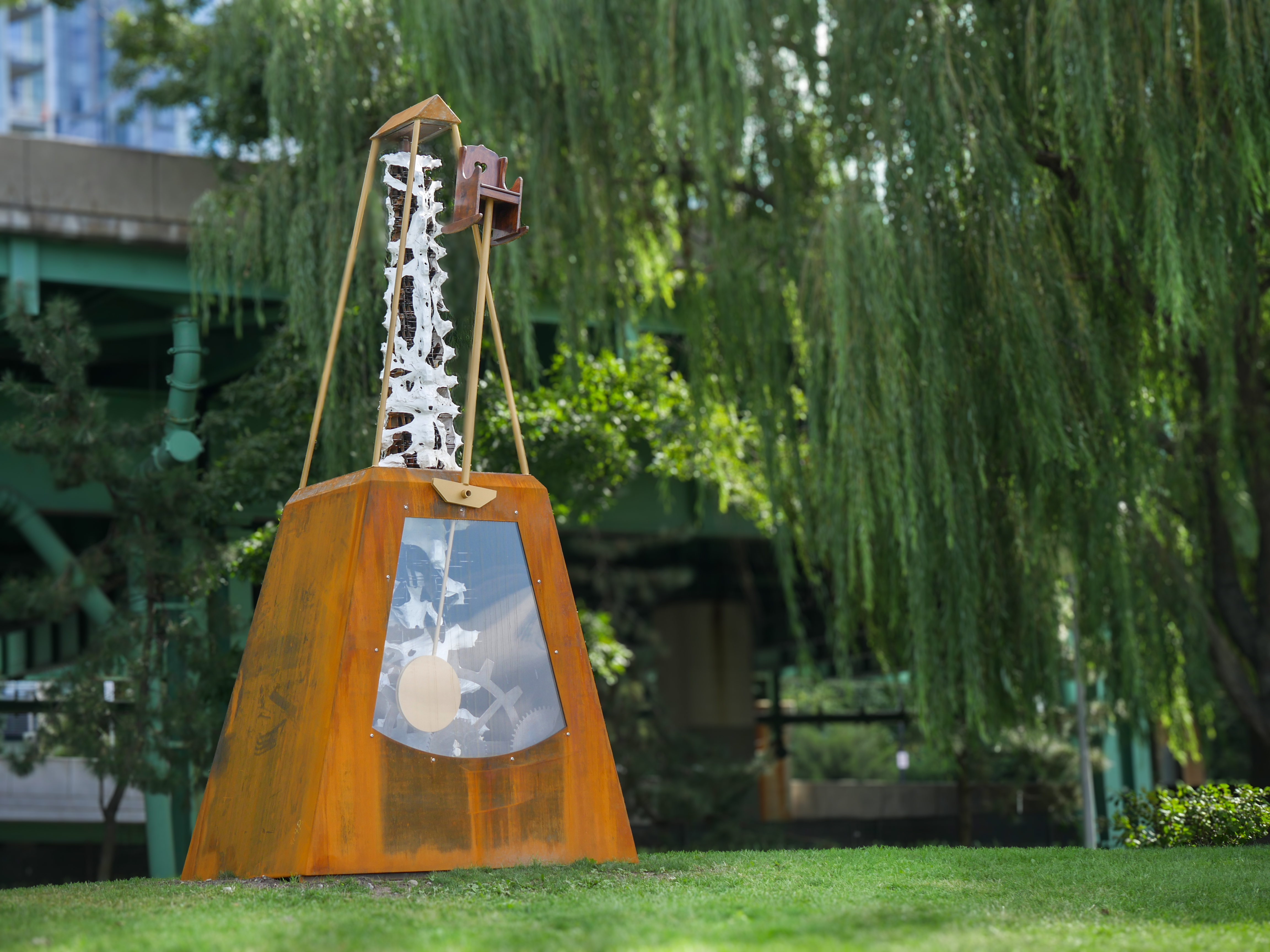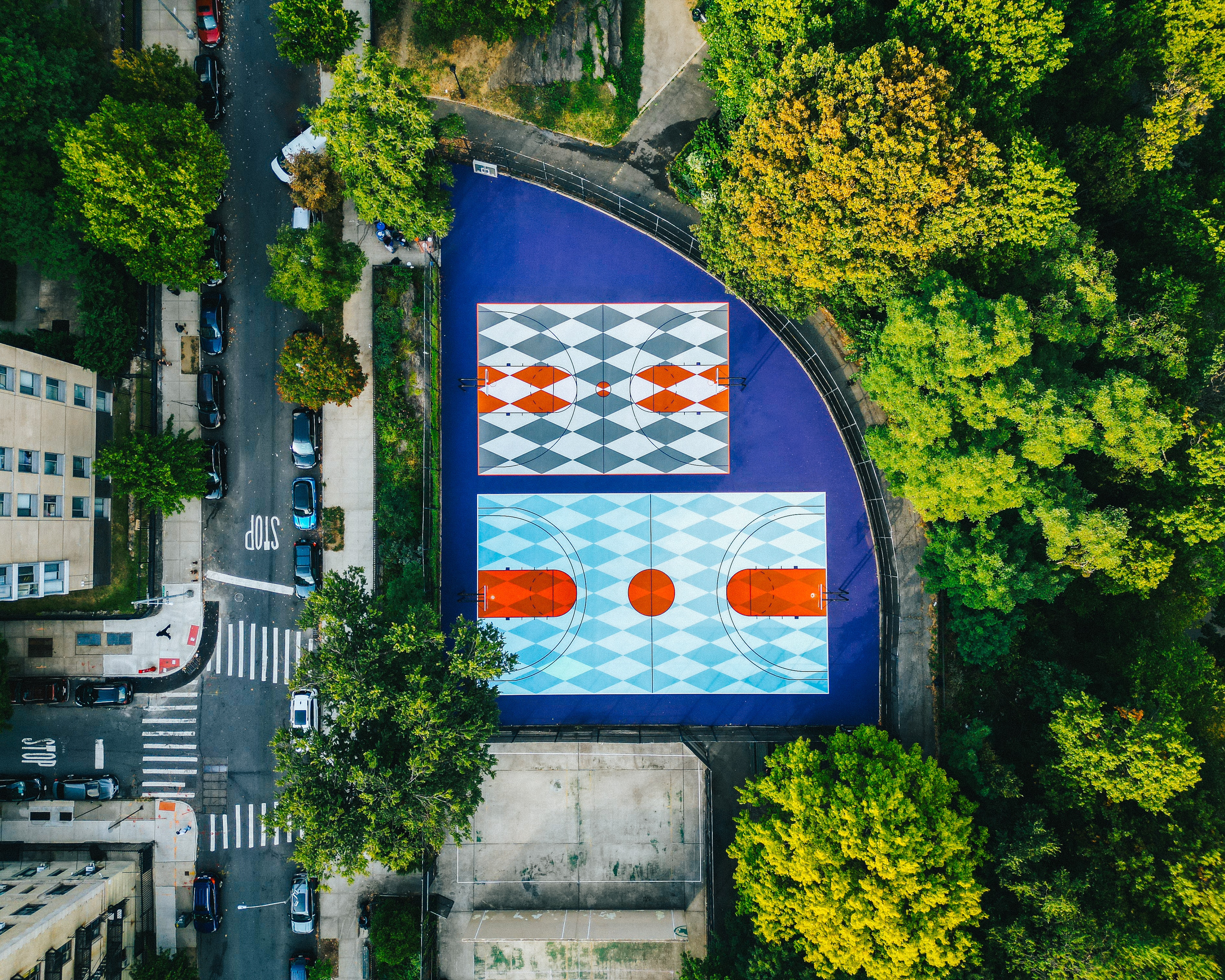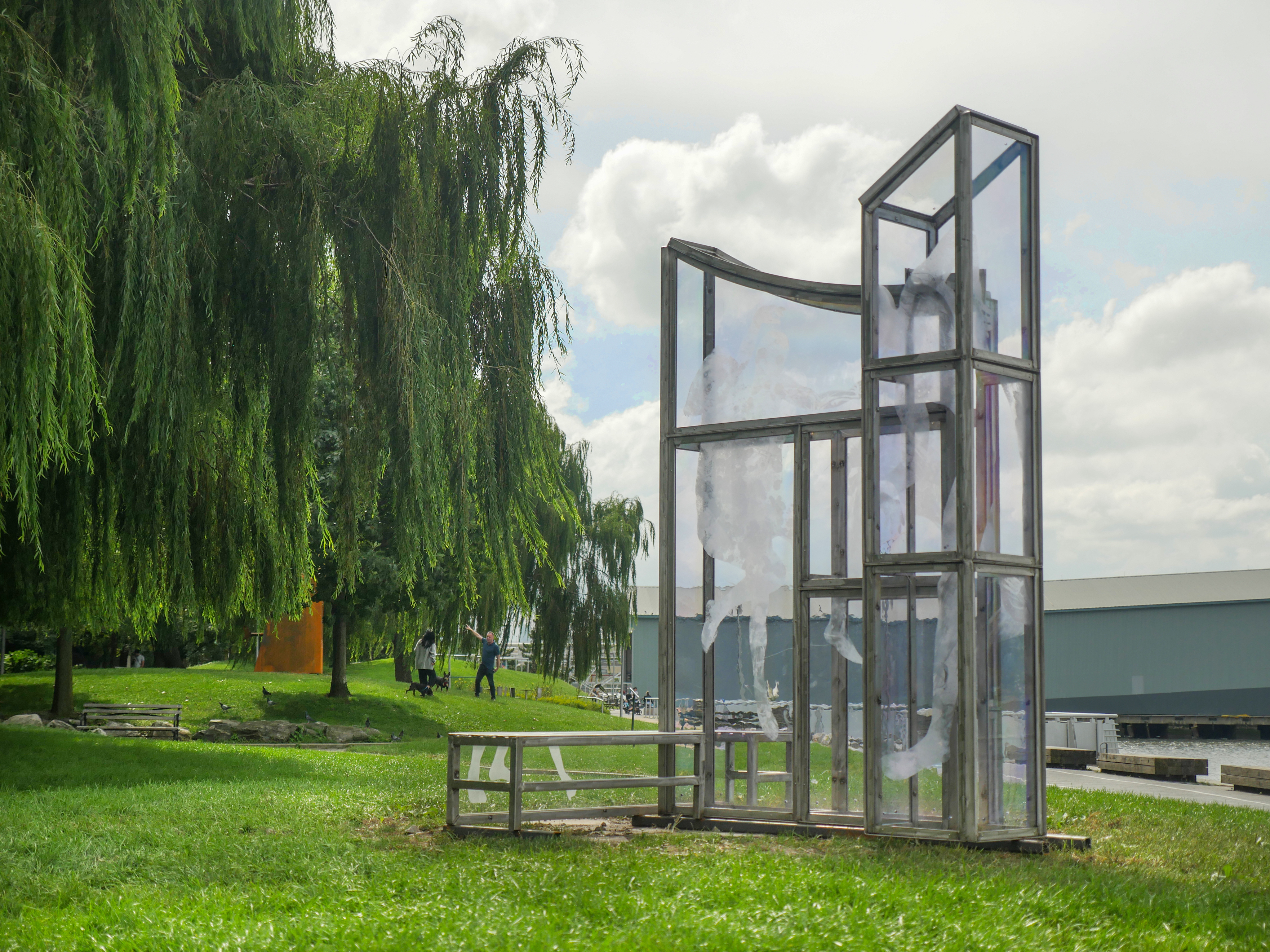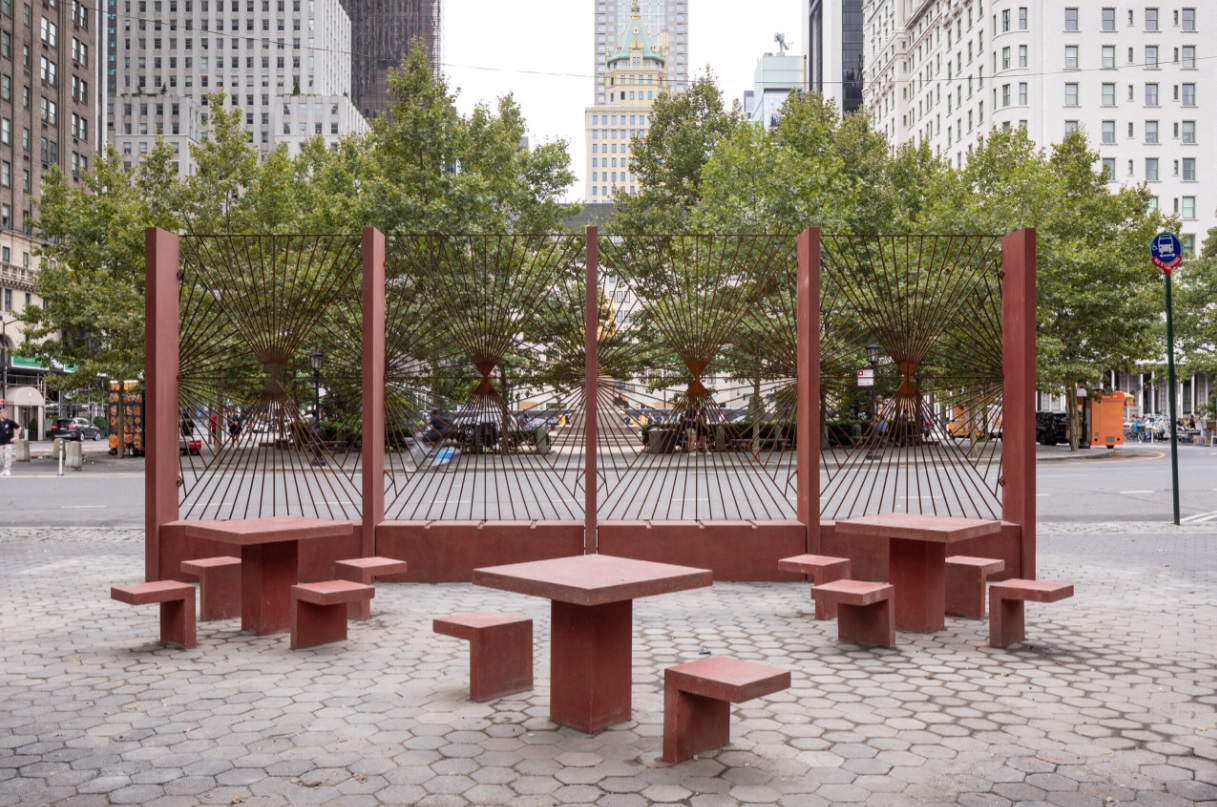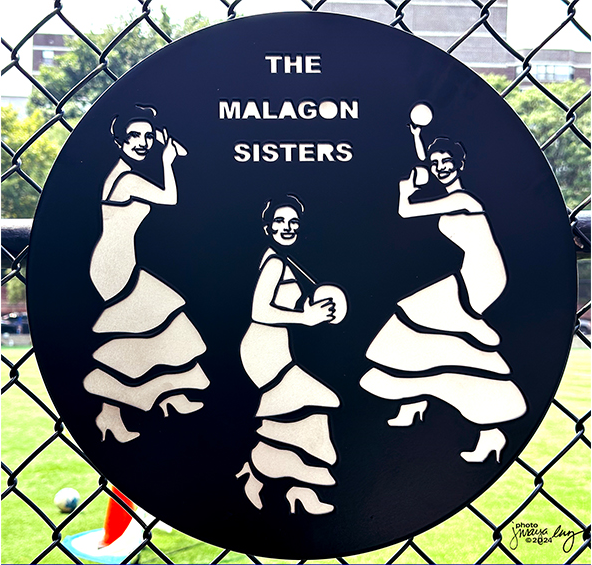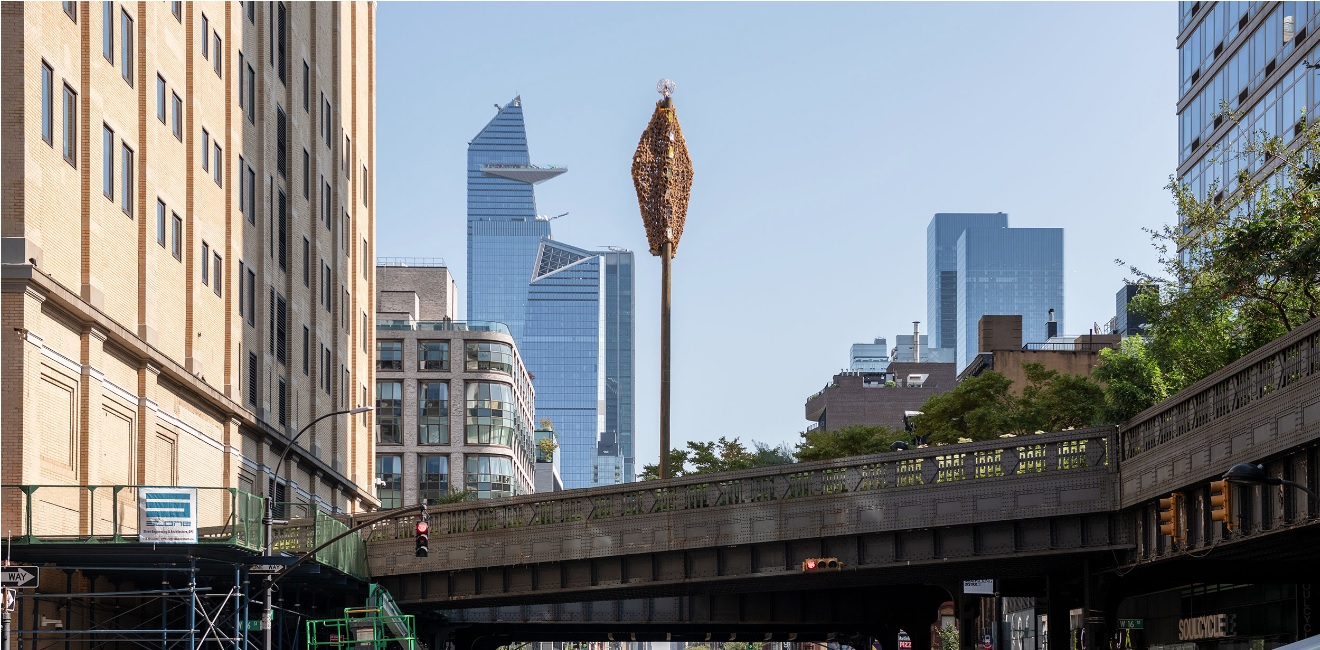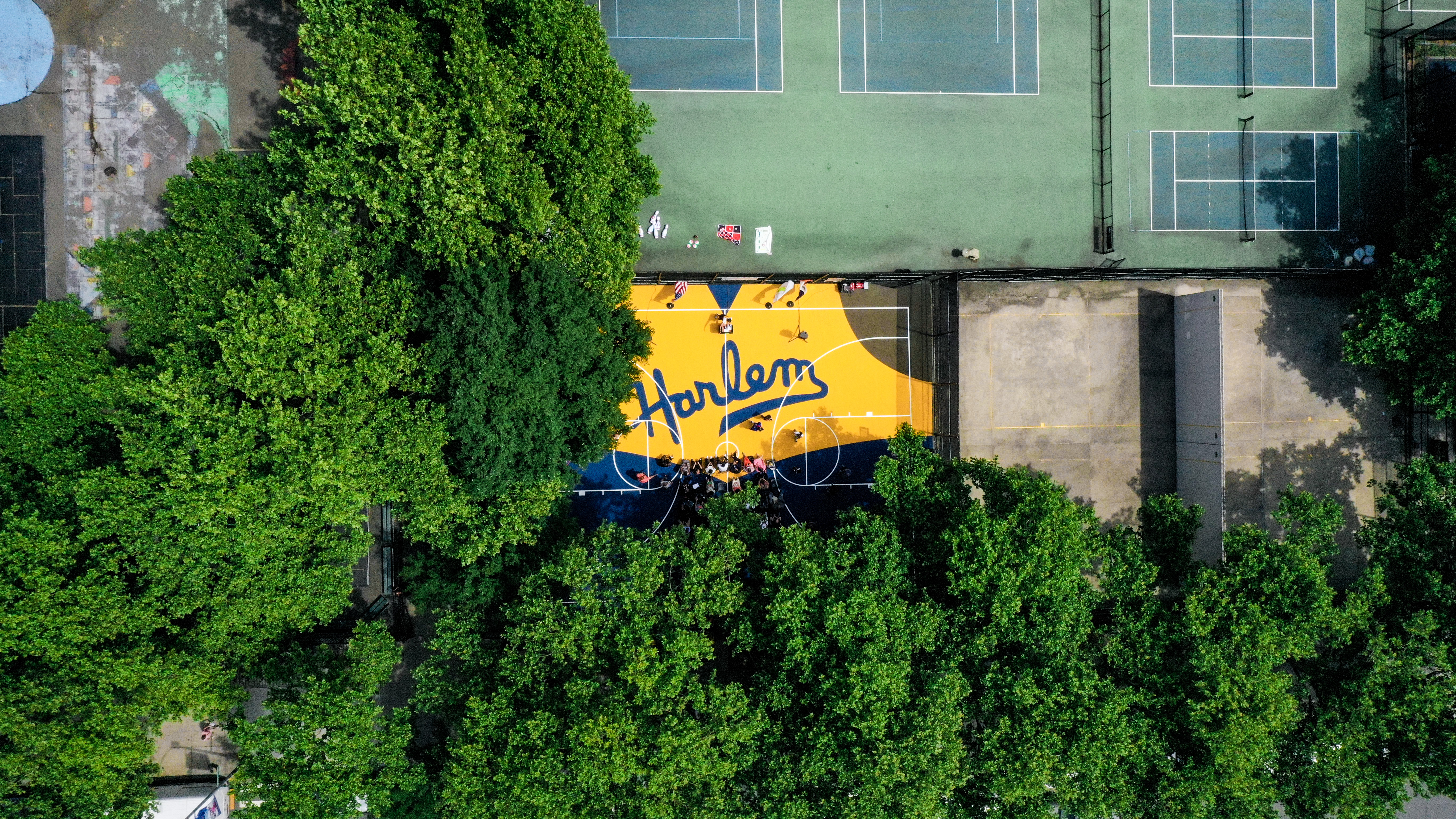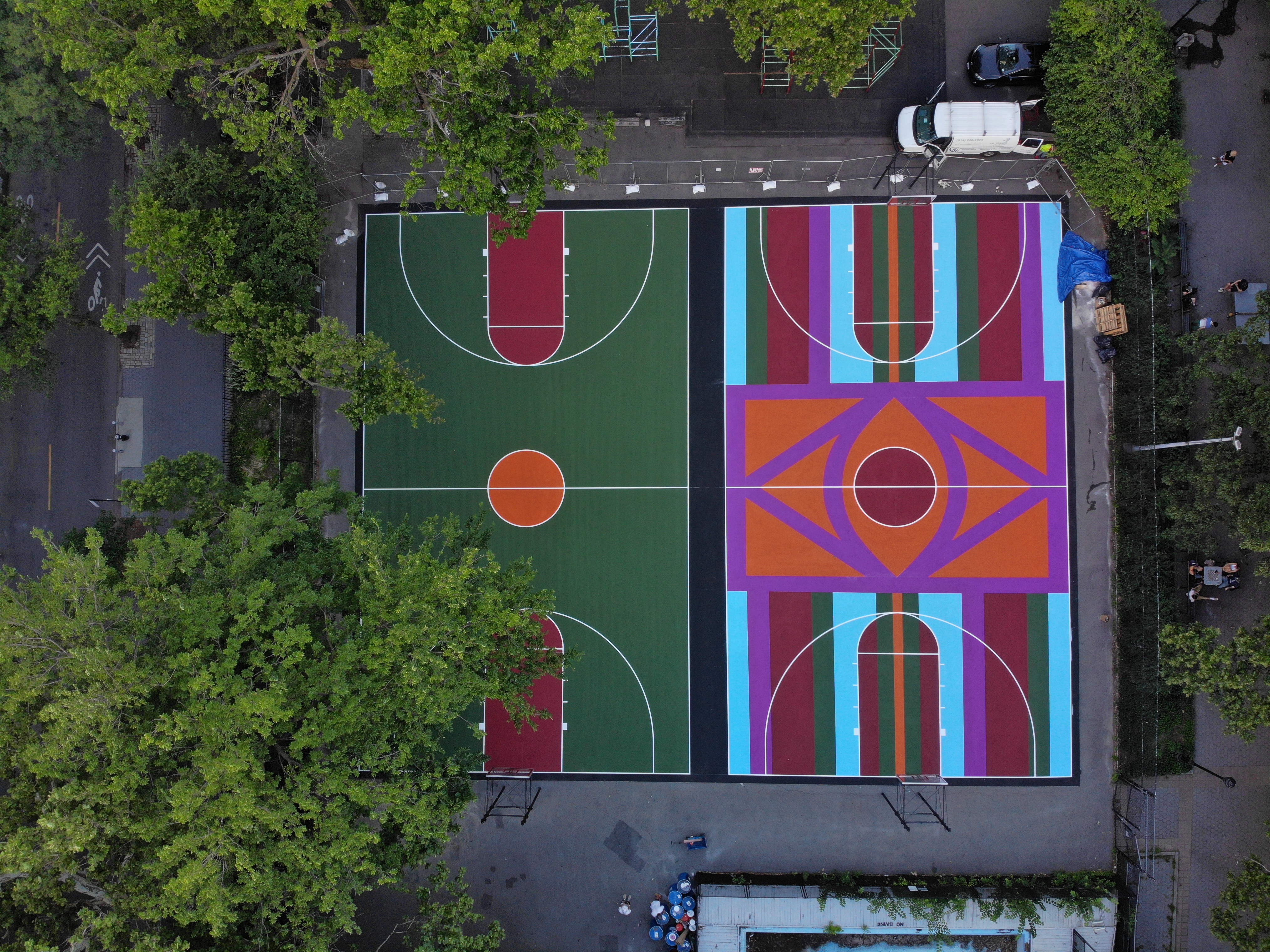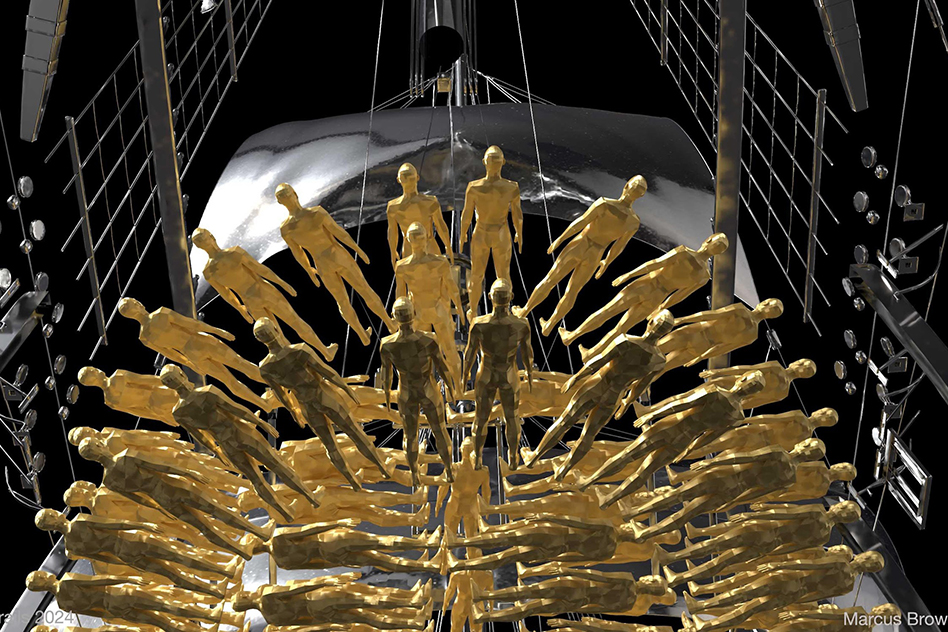Art in the Parks
Through collaborations with a diverse group of arts organizations and artists, Parks brings to the public both experimental and traditional art in many park locations. Please browse our list of current exhibits and our archives of past exhibits below. You can also see past grant opportunities or read more about the Art in the Parks Program.
Public Art Map and Guide
Find out which current exhibits are on display near you, and browse our permanent monument collection.
Search Current and Past Exhibits
2024
Manhattan
Sydney Shen, SBNO (Standing But Not Operating)
September 28, 2024 to September 3, 2025
Riverside Park South, Manhattan
Map/Directions (in Google Maps)
As an artist, Shen is interested in ambivalent emotional states such as fear, wonder, pleasure and pain. A roller coaster enthusiast, Shen is particularly fascinated by how theme parks sublimate the thrill of near-death into a form of amusement. Taking the form of something unsettlingly between an anatomical model, a carnival ride, and a metronome, which measure time through beats akin to the human heartbeat, SBNO (Standing But Not Operating) speaks to an innate human desire to be moved–physically and metaphorically–beyond our limits.
![]()
Jeff Sonhouse, Harlequin
September 4, 2024 to September 3, 2025
St. Nicholas Park, Manhattan
Map/Directions (in Google Maps)
The basketball courts are designed with a diamond-pattern the artist saw while researching artist Pablo Picasso’s paintings of the Harlequin: a comedic, multi-faceted character, usually masked and dressed in diamond-patterned outfits, featured in his works. As a former scholar-athlete, professional basketball player, and currently a fulltime visual artist, Sonhouse chose this pattern to commemorate those individuals, who like the Harlequin were showmen. They inspired him to be more than he imagined was expected of him.
![]()
Henry Roundtrip Marton Newman, Ectoplasm
September 28, 2024 to September 3, 2025
Riverside Park South, Manhattan
Map/Directions (in Google Maps)
Consisting of clear acrylic panels etched with life-sized silhouetted figures set within an architectural steel frame, Ectoplasm seeks to mediate the divide between public and private grief—offering an opportunity to reflect on our shared melancholia. The structure abstracts the city and renders it transparent. As the sun moves across the sky, shadowy reflections of the figures are cast, reforming and disappearing with the sun. Through the sculpture, the divides between interior and exterior, material and immaterial, gone and present, are blurred.
![]()
Edra Soto, Graft
September 5, 2024 to August 24, 2025
Doris Freedman Plaza, Central Park, Manhattan
Map/Directions (in Google Maps)
Made from corten steel and terrazzo, Graft is a monument to working class Puerto Rican communities and Soto’s first sculpture inspired by a specific house façade. Tables and seating invite visitors to enjoy a moment of rest, connection, and reflection. The sculpture creates a threshold, with one side representing a home’s exterior; the other, the more intimate atmosphere of an interior. The work’s title addresses Soto’s complex sentiments around migrating to Chicago while remaining connected to Puerto Rico. For Soto, feelings of dislocation are compounded by the island’s ambiguous status as an unincorporated territory of the United States. Graft opens connections between Puerto Rican communities across the city and reminds us of the centrality of the Caribbean to the history of New York City and the United States.
![]()
Beatrice Coron, Bloomingdale Medallions
August 16, 2024 to August 15, 2025
Various Locations, Manhattan
Map/Directions (in Google Maps)
This series of seven stainless steel medallions honors Bloomingdale neighborhood residents who have shaped our world, including The Malagon Sisters, musical group; Ben E. King, musician; Duke Ellington, musician; Bernardo Palombo, musician; Ismael Rivera, musician; Alvin Ailey, dancer and chorographer; and Angelo Romano, artist. Over the course of a year, the exhibition will rotate between three neighborhood parks: Booker T. Washington Playground (August 16, 2024 to December 12, 2024), Happy Warrior Playground (December 13, 2024 to April 10, 2025), and Frederick Douglass Playground (April 11, 2025 to August 15, 2025).
![]()
Arthur Simms, A Totem for the High Line
August 31, 2024 to August 3, 2025
The High Line, Manhattan
Map/Directions (in Google Maps)
For the High Line, Simms creates a new site-specific sculpture, A Totem for the High Line. In addition to materials that have become core to his body of work—wood, rope, and personal objects—A Totem for the High Line. also speaks directly to its site, both on the High Line and in New York City. The work incorporates a decommissioned utility pole found on Randall's Island, assorted cables, and discarded license plates from various states—perhaps a reference to the many visitors that flock to New York and the High Line. By integrating these elements, Simms continues his practice of entangling and reusing objects to emphasize the various histories and meanings they carry. The work stands as an homage to transformation and the perpetual unfolding of our past, present, and future.
![]()
The Black Fives Foundation, New York Rens Commemorative Court
June 26, 2024 to June 25, 2025
Howard Bennett Park, Manhattan
Map/Directions (in Google Maps)
The mural honors the legendary New York Rens, formed in Harlem in 1923 as the first Black-owned, all-Black, fully professional basketball team in history. From their debut on November 3, 1923 through 1949 when they dissolved, the Rens annually scheduled 130 games on average, winning 85%, the equivalent of an NBA team winning 70 games a season for 25 years in a row. Yet, there was no site in Harlem that commemorated and celebrated this Hall of Fame team, until now.
![]()
Na Chainkua Reindorf, Gaze
June 25, 2024 to June 24, 2025
Tompkins Square Park, Manhattan
Map/Directions (in Google Maps)
Gaze depicts a stylized eye which is a recurring symbol in Reindorf’s work. Typically shown as a canton in the upper left quadrant of her flag paintings, the unblinking eye also shows up within the paintings in unexpected ways, alongside female figures whose only distinct facial feature are unblinking eyes which stare back at the audience. Considering how female bodies can especially be objectified in and outside of art, the eye is intentionally repeated across Reindorf’s works to provide the depicted female figures an opportunity to confront the audience as well as counteract the prevalent male gaze.
This exhibition is presented by Glossier.
![]()
Marcus Brown, American Gold: A Ship of Human Bondage
June 19, 2024 to June 18, 2025
Albert Capsouto Park, Manhattan
American Gold: A Ship of Human Bondage is an Augmented Reality (AR) installation based on slave ships and enslaved people. The installation describes the captives as figures made of gold. American Gold aims to draw attention to the monetary value of captives and the inhumane treatment of African captives. American Gold makes the slave ship an almost invisible structure that floats above the viewer, giving the viewer a glimpse of how many people were squeezed into a slaving vessel from below. The installation is part of a larger series of art installations about slavery called Slavery Trails, placed at historical sites throughout the United States.
![]()
Teresa Solar-Abboud, Birth of Islands
July 13, 2024 to June 15, 2025
High Line, Manhattan
Map/Directions (in Google Maps)
Birth of Islands, is composed of slick, blade-like foam-coated resin elements that emanate outward from the pores of a muddy, gray ceramic stump. When visiting New York, Solar-Abboud was struck by the landscape—building after building rising from the soil in a fight for prominence, just as vegetation in the forest combats for sunlight in order to survive. Birth of Islands refers to this competitive ecosystem, while also evoking human anatomy: two yellow, tongue-like emanations have seemingly tunneled their way from underground onto the High Line. The forms are spoon-like in their appearance, concave or convex, depending on one’s vantage point. The result appears simultaneously post-human and primordial, sophisticated and elementary—a representation of our own unending transformation alongside nature's ever evolving state.
This exhibition is presented by the High Line.
![]()
